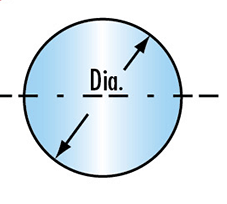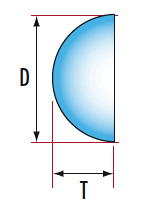Rubber Accelerator CAS NO. 109-46-6 DBTU
Rubber Accelerator CAS NO. 109-46-6 DBTU
Chemical Name: N,N'-Dibutyl thiourea
Molecular Formula:Â
Molecular Structure:
Molecular Weight: 188.25
CAS NO.:109-46-6
Rubber Accelerator CAS NO. 109-46-6 DBTUÂ Specifications
Item |
Crystal |
Appearance |
White crystal powder |
Initial Melting PointºC≥ |
60.0 |
Loss on Drying%≤ |
0.50 |
Ash%≤ |
0.30 |
Residue on 250μm Sieve,%≤ |
0.50 |
Physical property | |
Density at 20ºC(kg/m³) |
1060 |
Bulk density(kg/m³) |
360-390 |
Â
Rubber Accelerator CAS NO. 109-46-6 DBTUÂ Properties
White crystal powder. Soluble in alcohol, partly soluble in diethyl ether, insoluble in water.is tasteless;good storage stability.
Rubber Accelerator CAS NO. 109-46-6 DBTUÂ Applications
DBTU is an ullra-accelerator for mercaptan-modified CR(1-3phr). It has a vulcanizalion behaviour similar to that of ETU and DETU. It is also used as a secondary accelerator for NR and synthetic rubbers. It disperses easily in rubber. It is non-staining and does not bloom. It is practically odourless antioxidant for NR, antiozonant for NR and SR, particularly SBR. It is also a corrosion inhibitor.
Rubber Accelerator CAS NO. 109-46-6 DBTU:Â
Package: 25kg plastic woven bag, paper with plastic film bag, 25kg drum.
Storage: The product should be stored in the dry and cooling place with good ventilation, avoiding exposure of the packaged product to direct sunlight. The product with pallet should not be stacked. Stacking of palletized material or temperature of above 35 ºC can cause unusual compacted product. Since the date of production,the storage period is 12 months.
Â
Â
Ball lenses Spherical ball lenses are commonly used for laser collimating and focusing, laser-to-fiber coupling, fiber-to-fiber coupling, and fiber-to-detector coupling. Larger spheres are easier to handle and ease the sensitivity of translational alignment. However, smaller spheres fit into smaller packages.
Sapphire and Ruby ball lenses are both made from Al203. Ruby or Ruby-Doped sapphire owes its red color to traces of chromium oxide (chromium content for ruby balls is typically >0.5%). While their physical and chemical properties are basically the same, their optical properties are somewhat different. Sapphire has superior optical transmission qualities. Ruby Balls are easier to see and therefore easier to handle for physical applications.


Ball Lens Half-Ball Lens
Specification of our ball lens:
*Material:BK7 or other optical glasses,optical crystal materials
*Diameter:1mm - 40mm
*Dimension Tolerance:+/-0.005mm
*Surface Quality:40-20
*Sphericity:0.005mm
*Coating:optional
Sapphire Ball Lens,2 Mm Sapphire Ball Lens,Sapphire Half-Ball Lens,Sapphire Glass Ball Lens
China Star Optics Technology Co.,Ltd. , https://www.csoptlens.com
